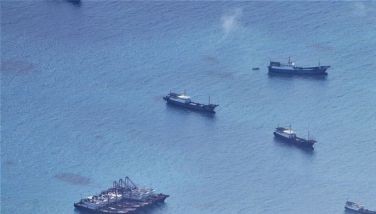IMF sees continued dollar outflows for Philippines

MANILA, Philippines — Multilateral lender International Monetary Fund (IMF) said the Philippines would continue to spend more US dollars than what it earns amid higher importation of capital equipment and raw materials to support the growing economy.
Luis Breuer, IMF mission chief to the Philippines, said the multilateral lender now expects the country’s current account deficit to hit 1.5 percent of gross domestic product (GDP) or five times wider than the previous projection of 0.3 percent of GDP.
“The current account deficit is expected to rise to 1.5 percent of GDP by end-2018, reflecting increased imports of capital goods and raw materials,” Breuer said.
The projected current account shortfall of the IMF is wider than the revised projection of the Bangko Sentral ng Pilipinas (BSP) of 0.9 percent of GDP or $3.1 billion.
The country’s current account consists of transactions in goods, services, primary income and secondary income. This account measures the net transfer of real resources between the domestic economy and the rest of the world.
Last year, the country spent more dollars than it earned, translating to a current account deficit of $2.52 billion or 0.8 percent of GDP, more than double the shortfall of $1.2 billion or 0.4 percent of GDP recorded in 2016.
This was the highest since the current account shortfall amounted to $2.87 billion or 3.5 percent of GDP in 1999. The deficit peaked at $5 billion or 5.1 percent of GDP during the Asian financial crisis in 1997.
Breuer said the current account deficit of the Philippines is projected to remain manageable, financed largely by foreign direct investments (FDIs).
This despite the projected lower FDI inflows of $9.2 billion set by the BSP for this year after reaching a record $10.02 billion last year.
“Downside risks stem mainly from rising inflation, continued rapid credit growth, higher US interest rates and US dollar, volatile capital flows and trade tensions,” Breuer added.
The BSP expects the country’s external payments position to further bleed this year with a wider balance of payments (BOP) deficit of $1.5 billion or 0.4 percent of GDP instead of $1 billion.
The BOP is the difference in total values between payments into and out of a country over a period. A deficit means more foreign exchange flows out of the country to pay for the importation of more goods, services and capital than what flows in from exports.
Latest data showed the country’s BOP deficit swelled to $3.26 billion in the first half of the year from only $706 million in the same period last year due to the widening trade deficit. The shortfall was more than double the projection of $1.5 billion for this year.
For his part, BSP Governor Nestor Espenilla Jr. said the country’s BOP position has been posting deficits since 2016 on account of strong foreign currency outflows, reversing previous surpluses accumulated from the large inflows due to quantitative easing since the global financial crisis.
“With the normalization of US monetary policy and rising global interest rates, we see significant corrections in capital flows that are affecting our BOP and exchange rate. This is compounded by uncertainties posed by the trade war and geopolitical risks,” Espenilla said.
The BSP chief added the external position remains manageable as the country has sufficient liquidity buffers against global headwinds with gross international reserves (GIR) level of $77.67 billion as of end June, equivalent to 7.5 months’ worth of imports.
Aside from the twin deficits in trade and current account, the peso slumped to its weakest level in 12 years piercing the 53 to $1 level this year as the US Federal Reserve jacked up interest rates for the second time this year and sees two more rate hikes instead of one for the rest of the year.
- Latest
- Trending
























